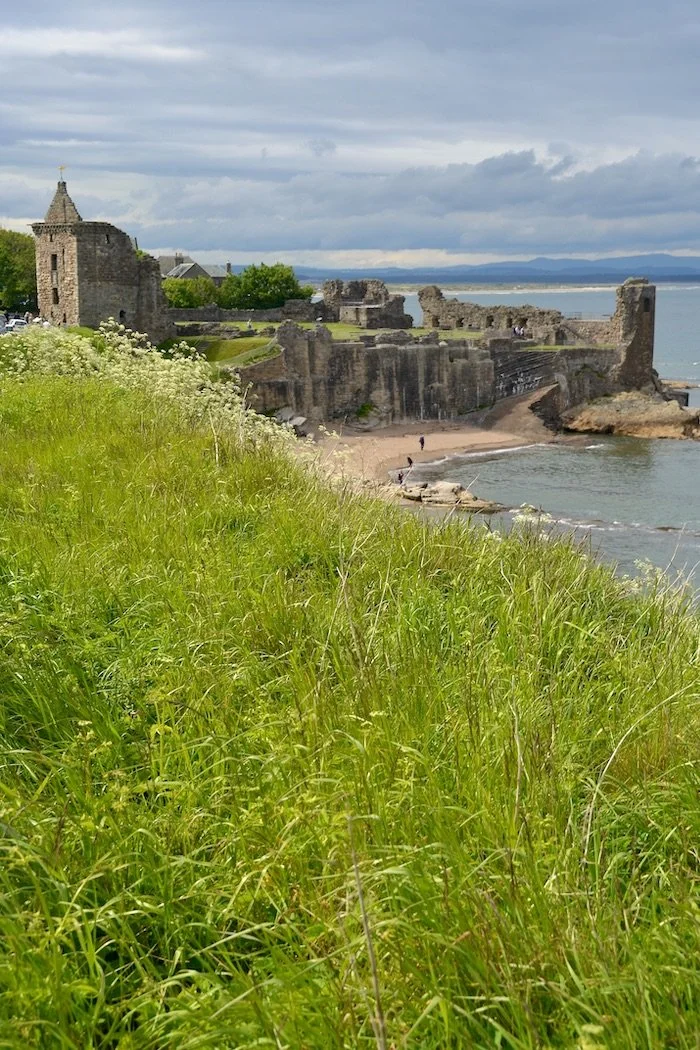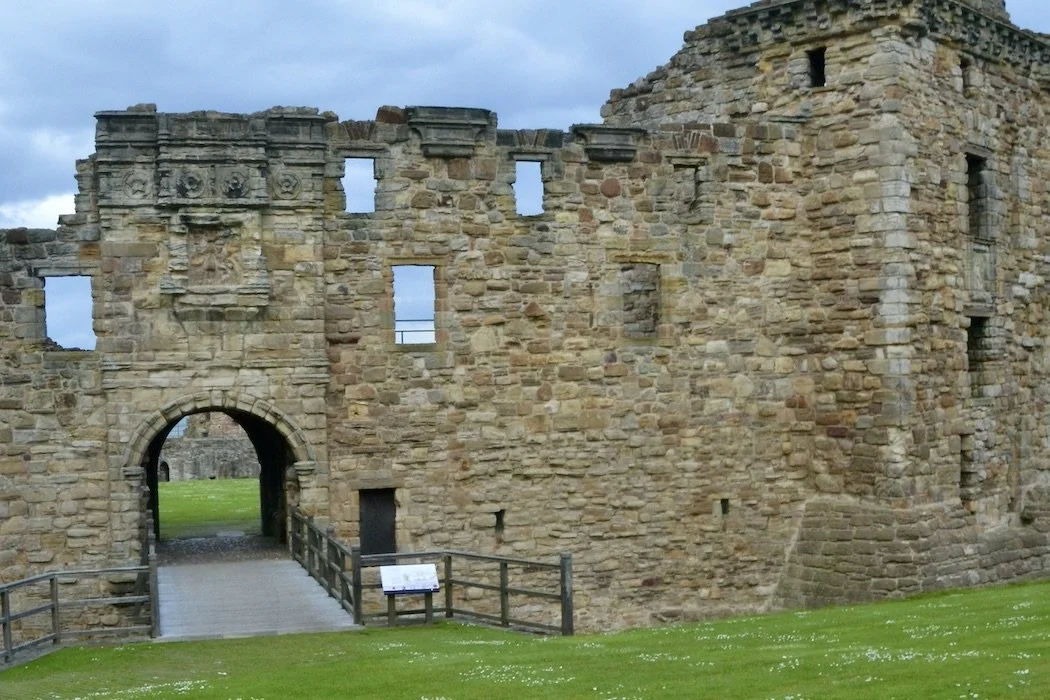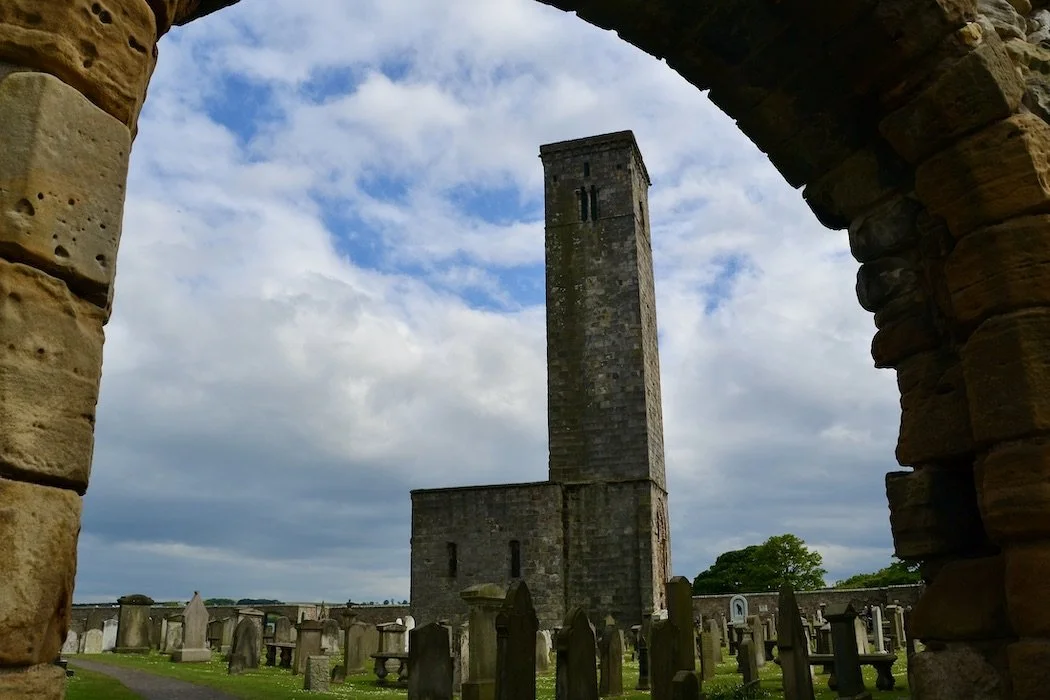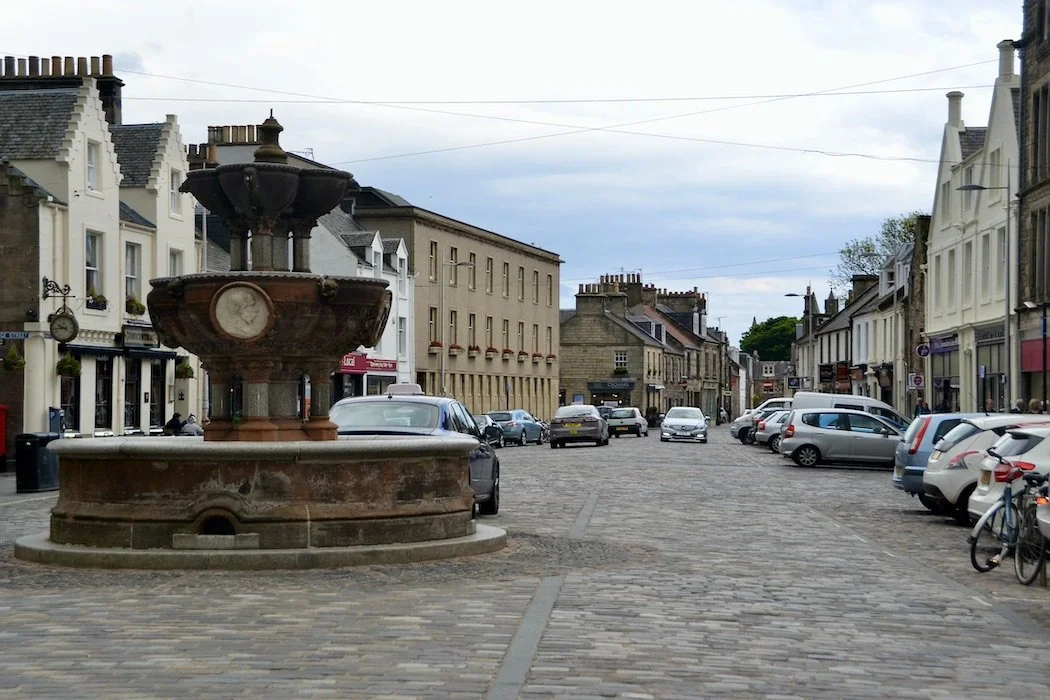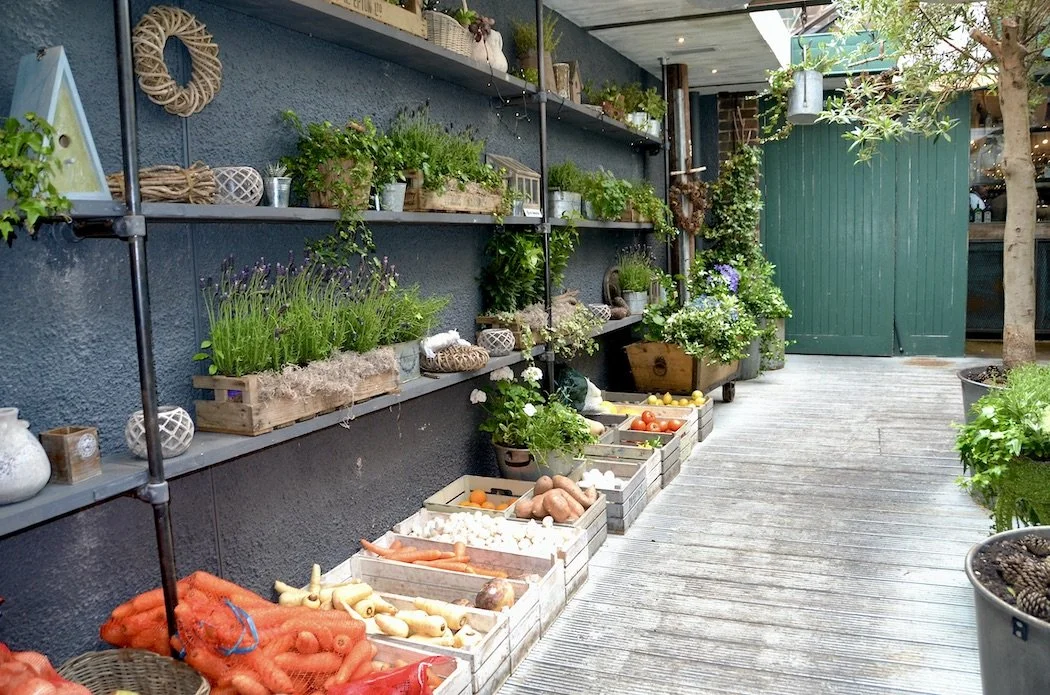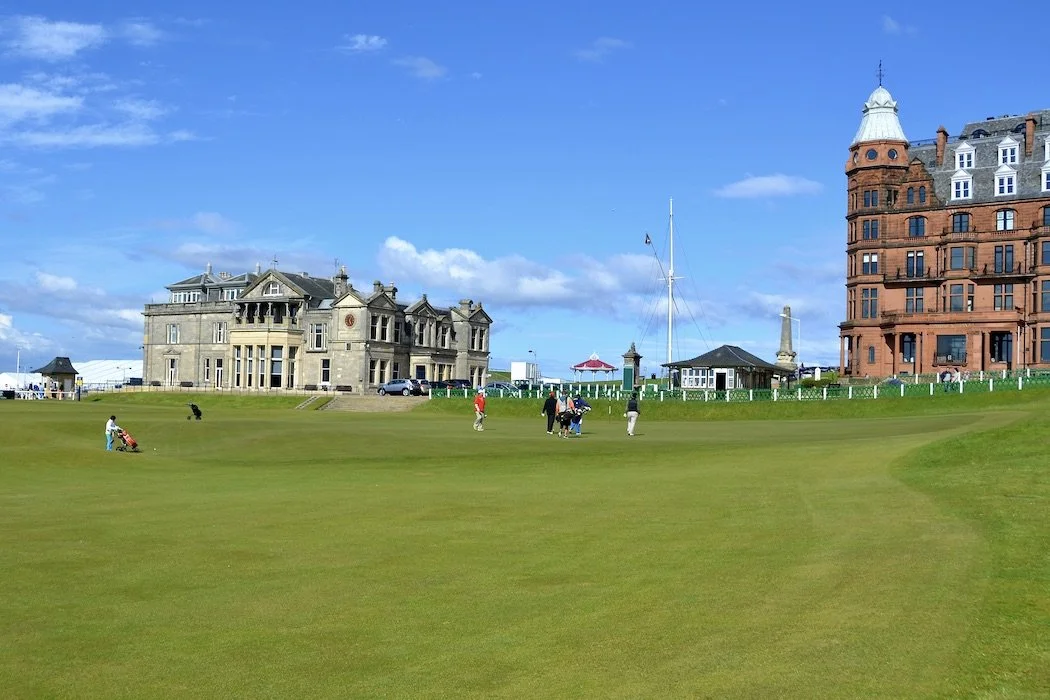Encounter the unexpected in St. Andrews
Typical St. Andrews streetscape
“The best things happen unexpectedly...” – unattributed
Located on the stunning coastline of Fife, a mere 30 miles (50 km) north of the capital of Edinburgh, the small city of St. Andrews in Scotland is known worldwide as the “Home of Golf”. Golf is such a big deal that many travelers expect the town to have nothing more to offer. Yet St. Andrews is a town more ancient than the game, packed with history, tradition, and scenic views. There is much to encounter here that is quite unexpected.
Named after the Apostle, some of whose bones rest here, there has been a church in St. Andrews since at least AD 747. The present town was established beginning in 1140, and St. Andrews Cathedral on the headland soon followed. Finally consecrated in 1318 with Robert the Bruce in attendance, the Cathedral was the largest building in Scotland for 700 years and once also the largest in Europe. It quickly became an important pilgrimage site, attracting multitudes who hoped to be blessed or cured of disease. Trade, growth, and political influence accompanied the travelers to St. Andrews, but the Scottish Reformation brought an abrupt end to all the affluence in 1559. Soon thereafter, the Cathedral was cleansed, abandoned, and then fell into ruin while the town declined into the 18th century.
Nearby St. Andrews Castle also offers a taste of medieval Scotland. Originally a bishop’s palace, it includes a dungeon and intact underground passages that lead into town, a former escape route for castle residents. Now also ruins, the remaining architecture and cliff-top location are breathtaking. A short walk down The Scores is the Old Course at St. Andrews, considered the oldest in the world, as the game was first played on the Links in the early 1400s. Golf is the prominent pastime here, with a total of seven golf courses, making the game a major source of visitors. Architecturally, the clubhouse of the Royal & Ancient Golf Club is remarkable, as is the 700-year-old Swilken Bridge on the 18th fairway.
One way to arrive in town is along the still-existing 64-mile-long (104 km) Fife Pilgrim Way. Starting at the Firth of Forth, roads, bridges, and crossings were created centuries ago to pave the way for the stream of pilgrims. Otherwise, it’s an hour’s drive from Edinburgh. This very walkable town is filled with independent and family-run shops, from farm produce to booksellers, as well as quirky restaurants and cafes, many of which cater to students. St. Andrews University was founded in 1413, the 3rd oldest in the English-speaking world. The town is very much defined by the university students, so off-season here is when term is out, and the population shrinks by one-third.
A short walk from the town center, the Botanic Garden is a hidden gem worth exploring to enjoy what is blooming with the season. Many fine beaches also make St. Andrews a seaside destination for Scots. The most notable is the Beach at West Sands, of “Chariots of Fire” movie fame, adjacent to the Old Course. And don’t forget the Highland Games that take place each year in July.
Don’t miss:
An evening stroll from the ruins on the headland along the coast to West Sands Beach.
Serendipity:
Finding the unexpected- The Botanic Garden, a contrast and surprise in a place of manicured golf greens and rugged coastline.
Lunch tip:
Forgan’s on Market Street for both the locally sourced food and the warm atmosphere.
Bedtime:
Rusacks Hotel in a landmark building overlooking the 18th green at the “Home of Golf”.
Subscribe for inspiration to have my posts drop directly into your inbox. *If you enjoyed what you read, please share this post with like-minded travelers.*
*All photographs are mine, taken with my Nikon D3100 or iPhone 12 Pro.*



